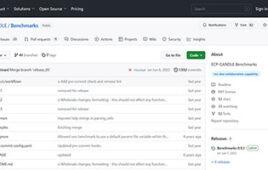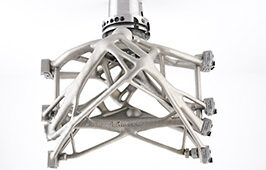Enter the 2019 R&D 100 Awards!
LEWICE3D is a 2018 R&D 100 Award winner. All of the R&D 100 Awardees were announced at the R&D 100 Awards Gala held in Orlando, Florida on Nov. 16, 2018.
The R&D 100 Awards have served as the most prestigious innovation awards program for the past 57 years, honoring R&D pioneers and their revolutionary ideas in science and technology.
Submissions for the 2019 R&D 100 Awards are now being accepted. Any new technical product or process that was first available for purchase or licensing between January 1, 2018 and March 31, 2019, is eligible for entry in the 2019 awards.
Start or complete your entry now: visit: https://rd1002019.secure-platform.com/a. For more info: www.rd100conference.com/awards
Aircrafts must be prepared to deal with any atmospheric condition in order to fly safely and efficiently, but with a wide range of aircraft models, shapes and purposes, it can be difficult to predict exactly how nature will affect each vehicle. Trial-and-error methods of designing and building an aircraft, testing it against controlled conditions, and then re-designing and re-building, are time-consuming and costly—the more engineers can predict about an aircraft’s performance ahead of time, the more resources they can save by building a more effective model the first time.
NASA’s Glenn Research Center seeks to boost engineers’ prediction power when it comes to understanding how ice will accumulate on the surface of an aircraft during flight. LEWICE3D, a 3D simulation software that earned Glenn Research Center an R&D 100 Award last year, takes into account several factors in the movement of freezing water droplets in order to model the shapes of ice accretion on a variety of differently-shaped surfaces. The software is free to the general public with a NASA Software Usage Agreement, and is already being used in a variety of aviation settings.
“The current version of LEWICE3D (3.63) has on the order of 30 customers. These customers span industrial organizations, government, and academia,” said Mark Potapczuk, research aerospace engineer at the Icing Branch of Glenn Research Center, in an exclusive interview with R&D Magazine. “LEWICE3D originated as an extension of LEWICE, a two-dimensional icing tool. As such it is classically used for the icing analysis of the wing of any fixed wing aircraft. This includes general aviation, business jets, commercial aircraft, and unmanned vehicles.”
The newer tool’s 3D capabilities allow for further uses on newer or unconventional aircraft shapes. For example, LEWICE3D has been used to test the design of the D8 Series “Double Bubble” aircraft, a wide-bodied jet liner in development by NASA, which could be ready for service by 2030. The 3D simulations can also predict ice accretion on specific aircraft parts.
“Due to the generality of the three dimensional capabilities of LEWICE3D it is used for other icing analysis as well. One such other common application is the analysis, design, and placement of aircraft mounted probes and sensors,” said Potapczuk. “This analysis includes probes that need to be protected from ice, such as the pilot probes that measure airspeed, as well as probes that identify the presence of the aircraft in a hazardous icing environment.”
LEWICE3D works by using information about the airflow around an aircraft to calculate the trajectory, mass and energy balance, and impingement of freezing water droplets as they come into contact with the vehicle. By simulating the physics involved in the formation and accumulation of the ice particles, the software models the ice shapes that would result on the given surface.
The tool also includes capabilities to simulate super-cooled large droplet (SLD) icing conditions, involving freezing drizzle and rain.
“The dynamics and thermodynamics of droplet motion in the surrounding air as well as what happens upon impact with an aircraft surface can influence the development of the ice shapes that are simulated in an ice accretion code,” Potapczuk explained. “Some of the elements that play a role in SLD icing are drop break-up upon approach to a surface, drop splashing and reimpingement, (and) differences in temperature and velocity between the drop and the surrounding air. In earlier versions of ice accretion codes the only element of those mentioned above that were calculated in the code was the drop velocity.”
According to the LEWICE3D team, the software can be especially helpful in the emerging markets of unmanned aircraft systems (UAS) and urban air mobility (UAM). UAS are especially susceptible to icing due to their small size and low speed, features that are necessary for them to perform exploration missions in areas that are otherwise inaccessible to humans. And UAM, which could be used to transport cargo or small amounts of passengers through the air in city settings, will likely involve non-typical aircraft shapes, such as quad copters. Still in their early stages, both of these markets could benefit from the use of ice accretion models in the process of designing new aircrafts, says the LEWICE3D team.
The results of LEWICE3D’s calculations have been validated through comparisons to data from experiments at the NASA Glenn Icing Research Tunnel and other facilities, according to Potapczuk. The software has the ability to reproduce ice shapes from the Glenn database in a wide variety of aviation conditions. By simulating these conditions in LEWICE3D, aircraft designers and engineers can build better prototypes, more likely to pass muster when it’s their turn to face the icing tunnel.




